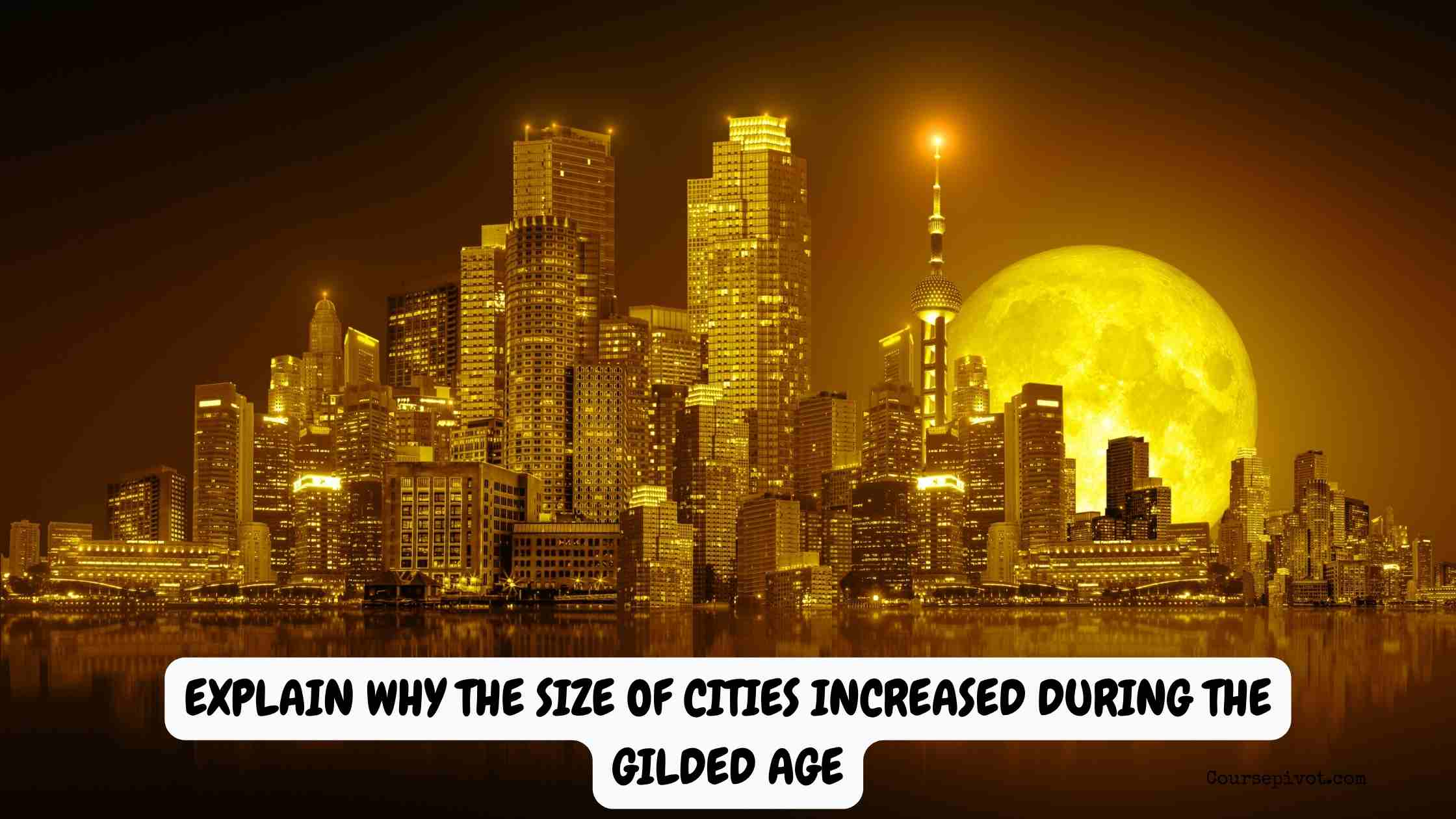
Why the Size of Cities Increased During the Gilded Age
The Gilded Age, spanning the late 19th century, was a time of dramatic change in America. I’ve always been fascinated by how cities transformed from small towns to bustling hubs during this era. Understanding why the size of cities increased during the Gilded Age reveals the forces that shaped modern urban life. In this article, I’ll explore five key reasons behind this urban boom, drawn from my own research and reflections on history. These insights shed light on a pivotal period. Let’s dive into why cities grew so rapidly in the Gilded Age.
Table of Contents
Have you ever pictured cities like New York or Chicago exploding with people back then? The growth wasn’t random—it was driven by big changes. Ready to uncover the five reasons for the urban surge?
Cities didn’t just grow; they became the heartbeat of progress. I’ve imagined walking those crowded streets, alive with opportunity and struggle. Let’s explore what fueled this transformation.
1. Industrialization Drove Job Opportunities
Factories and industries sprouted during the Gilded Age, pulling people to cities. This is a major reason why the size of cities increased during the Gilded Age. I’ve read about workers flocking to urban centers for jobs.
- Factory boom. Steel, textiles, and railroads created thousands of jobs.
- Rural decline. Farms offered fewer opportunities as machines took over.
- Economic pull. Cities promised steady wages, unlike rural life.
Why did jobs matter? People chased better livelihoods. Industrial hubs like Chicago became magnets for workers.
Read our blog on Factors that Cause Fluctuations in the Crime Rate
2. Immigration Surged Urban Populations
Millions of immigrants poured into America, settling in cities. This is a key reason why cities grew during the Gilded Age. I’ve seen photos of crowded tenements filled with new arrivals.
- European influx. Irish, Italians, and others sought opportunity.
- Port cities thrived. New York and Boston became entry points.
- Cultural hubs. Immigrants built communities, boosting city life.
Why did immigrants choose cities? Urban areas offered jobs and networks. They fueled population spikes.
3. Transportation Advances Connected Cities
New railroads and streetcars made cities accessible. This is a vital reason why the size of cities increased during the Gilded Age. I’ve marveled at how trains changed travel.
- Railroad networks. Trains linked rural areas to urban markets.
- Streetcars expanded. People could live farther from work.
- Goods movement. Supplies flowed, supporting urban growth.
Why was transport key? It made cities reachable and livable. Better transit meant more people could settle.
4. Technological Innovations Supported Urban Life
Inventions like electricity and elevators enabled bigger cities. This is a fascinating reason why cities grew during the Gilded Age. I’ve thought about how skyscrapers reshaped skylines.
- Elevators rose. Tall buildings housed more people and businesses.
- Electricity lit cities. Nightlife and work extended after dark.
- Water systems. Clean water supported larger populations.
Why did tech matter? It made dense living possible. Innovations turned cities into modern hubs.
5. Cultural and Economic Opportunities Attracted People
Cities became centers of culture and wealth. This is a compelling reason why the size of cities increased during the Gilded Age. I’ve imagined the allure of theaters and shops.
- Entertainment hubs. Theaters, museums, and parks drew crowds.
- Business growth. Banks and companies offered wealth chances.
- Social mobility. Cities promised a better life for many.
Why were cities so appealing? They offered excitement and opportunity. People flocked for a brighter future.
- Read our blog on Describe What Sanctions Are and Why They Are Needed
What’s Next for You
Grasping why the size of cities increased during the Gilded Age is like stepping into a time machine. I’ve been captivated by how industry, immigration, and innovation reshaped America. These five reasons—industrialization, immigration, transportation, technology, and cultural pull—explain the urban boom. They show how human ambition and progress built the cities we know today. Will you see cities as just buildings, or as stories of change?
Here’s how to explore further:
- Read history. Dive into books on the Gilded Age.
- Visit museums. See exhibits on urban growth.
- Reflect locally. Check how your city grew back then.
The Gilded Age’s urban surge shaped our world. Why cities grew is a tale of grit and dreams. Start uncovering this history today for a deeper view.
Cite this article
You can copy and paste your preferred citation format below.
Martin, L. & Arquette, E.. (2025, May 29). Why the Size of Cities Increased During the Gilded Age. Coursepivot.com. https://coursepivot.com/blog/explain-why-the-size-of-cities-increased-during-the-gilded-age/



